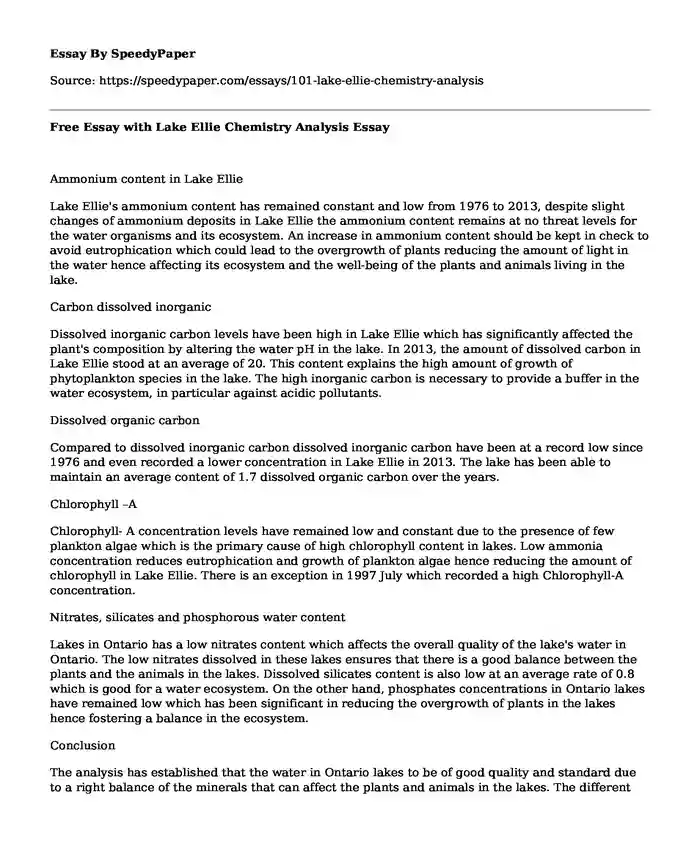Ammonium content in Lake Ellie
Lake Ellie's ammonium content has remained constant and low from 1976 to 2013, despite slight changes of ammonium deposits in Lake Ellie the ammonium content remains at no threat levels for the water organisms and its ecosystem. An increase in ammonium content should be kept in check to avoid eutrophication which could lead to the overgrowth of plants reducing the amount of light in the water hence affecting its ecosystem and the well-being of the plants and animals living in the lake.
Carbon dissolved inorganic
Dissolved inorganic carbon levels have been high in Lake Ellie which has significantly affected the plant's composition by altering the water pH in the lake. In 2013, the amount of dissolved carbon in Lake Ellie stood at an average of 20. This content explains the high amount of growth of phytoplankton species in the lake. The high inorganic carbon is necessary to provide a buffer in the water ecosystem, in particular against acidic pollutants.
Dissolved organic carbon
Compared to dissolved inorganic carbon dissolved inorganic carbon have been at a record low since 1976 and even recorded a lower concentration in Lake Ellie in 2013. The lake has been able to maintain an average content of 1.7 dissolved organic carbon over the years.
Chlorophyll –A
Chlorophyll- A concentration levels have remained low and constant due to the presence of few plankton algae which is the primary cause of high chlorophyll content in lakes. Low ammonia concentration reduces eutrophication and growth of plankton algae hence reducing the amount of chlorophyll in Lake Ellie. There is an exception in 1997 July which recorded a high Chlorophyll-A concentration.
Nitrates, silicates and phosphorous water content
Lakes in Ontario has a low nitrates content which affects the overall quality of the lake's water in Ontario. The low nitrates dissolved in these lakes ensures that there is a good balance between the plants and the animals in the lakes. Dissolved silicates content is also low at an average rate of 0.8 which is good for a water ecosystem. On the other hand, phosphates concentrations in Ontario lakes have remained low which has been significant in reducing the overgrowth of plants in the lakes hence fostering a balance in the ecosystem.
Conclusion
The analysis has established that the water in Ontario lakes to be of good quality and standard due to a right balance of the minerals that can affect the plants and animals in the lakes. The different elements have remained constant over the years which indicate low pollution levels in the lakes.
Cite this page
Free Essay with Lake Ellie Chemistry Analysis. (2018, Mar 19). Retrieved from https://speedypaper.net/essays/101-lake-ellie-chemistry-analysis
Request Removal
If you are the original author of this essay and no longer wish to have it published on the SpeedyPaper website, please click below to request its removal:
- The Motown Effect Essay, Free Example for Students
- The Gift of Diabetes: Essay Sample for Students
- HRM Plan Essay Sample
- Free Essay on the Measures of Scale: Correlation and Regression
- Ethical Crisis in the US Essay Sample
- Essay Example on Story of My Body
- Free Essay. Social Construction Theory and Its Analysis of Early Childhood
Popular categories





